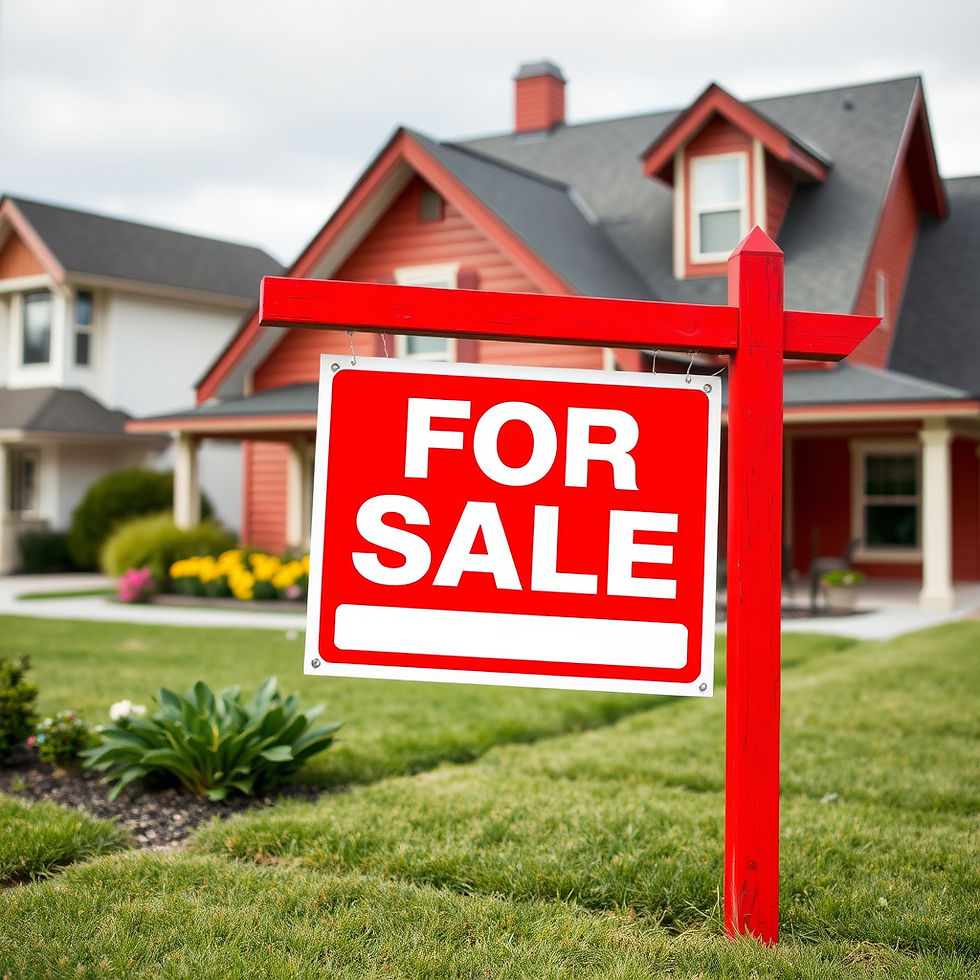Bay Area Housing Market
- Rowan Davenport-Smith
- Jul 9
- 3 min read
Updated: Aug 4

Is the Bay Area Housing Market Cooling?
The Bay Area housing market is undergoing a noticeable transition. After years of soaring prices and intense competition, current market conditions suggest a shift toward a more balanced landscape—one that could offer new opportunities for buyers, while prompting sellers and investors to reassess their strategies.
While home sales are down compared to last year and inventory levels are on the rise, the market remains mixed across different subregions. In the South Bay and East Bay, home values have continued to climb, fueled by the AI tech boom and growing demand for larger homes with outdoor space. Meanwhile, areas like San Francisco and San Mateo County have seen home values dip in recent months, reflecting localized market corrections.
As of May 2025, the average home value in the San Francisco-Oakland-Hayward region stands at $1,180,795—a slight year-over-year increase of 0.6%. The Bay Area’s median home price holds strong at $1.4 million. However, county-level data tells a more varied story: Marin County’s median sold price rose 4.7% to $1,885,000, while Napa saw a 6.8% decline to $920,000. San Francisco home prices jumped 6.6% to $1,801,000, but San Mateo experienced an 8.3% drop, settling at $2.2 million. Santa Clara County posted a 3.4% gain, with a median sold price of $2,171,125.
Buyers are taking a bit more time, with the median days to pending now at 14. The unsold inventory index for the region has increased to 2.9 months (up from 1.9 months a year ago), a key sign of loosening market pressure. Rental prices remain high, with average rent in the Bay Area at $3,100 and $3,500 in San Francisco.
Looking Ahead: 2025-2026 Forecast
Market analysts predict a modest price decline in the coming year. Zillow projects a 5.2% dip in home prices for the San Francisco metro area by April 2026—more pronounced than in other major California markets like Los Angeles and Sacramento. Contributing factors include elevated home values, tech industry fluctuations, and ongoing out-migration. Mortgage rates, currently between 6% and 7%, are expected to ease slightly to 6.0–6.5% by the end of 2025, offering some relief to buyers. By late 2026, the market is expected to stabilize, with prices either leveling off or seeing modest growth.
Key Drivers to Watch
Several forces continue to shape the Bay Area market. The region’s strong economic foundation, led by the tech sector, attracts a highly skilled workforce and keeps demand relatively steady. However, the ongoing housing shortage—caused by geographical constraints and regulatory hurdles—continues to limit new supply. Remote work has also enabled more residents to seek affordability outside the Bay Area, altering traditional demand patterns.
High mortgage rates remain a significant factor, impacting affordability and buyer behavior. At the same time, tech sector performance plays a key role—any instability can ripple through housing demand almost immediately.
What This Means for You
For buyers, the increase in inventory and a potential decline in prices may open up long-awaited opportunities—though affordability remains a concern due to elevated rates and high home values. Sellers should approach pricing realistically and be prepared for more competition. Meanwhile, investors may still find value in the Bay Area thanks to its strong long-term fundamentals, but local expertise and careful analysis are more critical than ever.
In summary, the Bay Area housing market is adjusting. A crash remains unlikely, but the days of aggressive bidding wars and double-digit appreciation may be behind us—for now. Staying informed, working with trusted professionals, and understanding local trends will be key to navigating this new chapter.









Comments